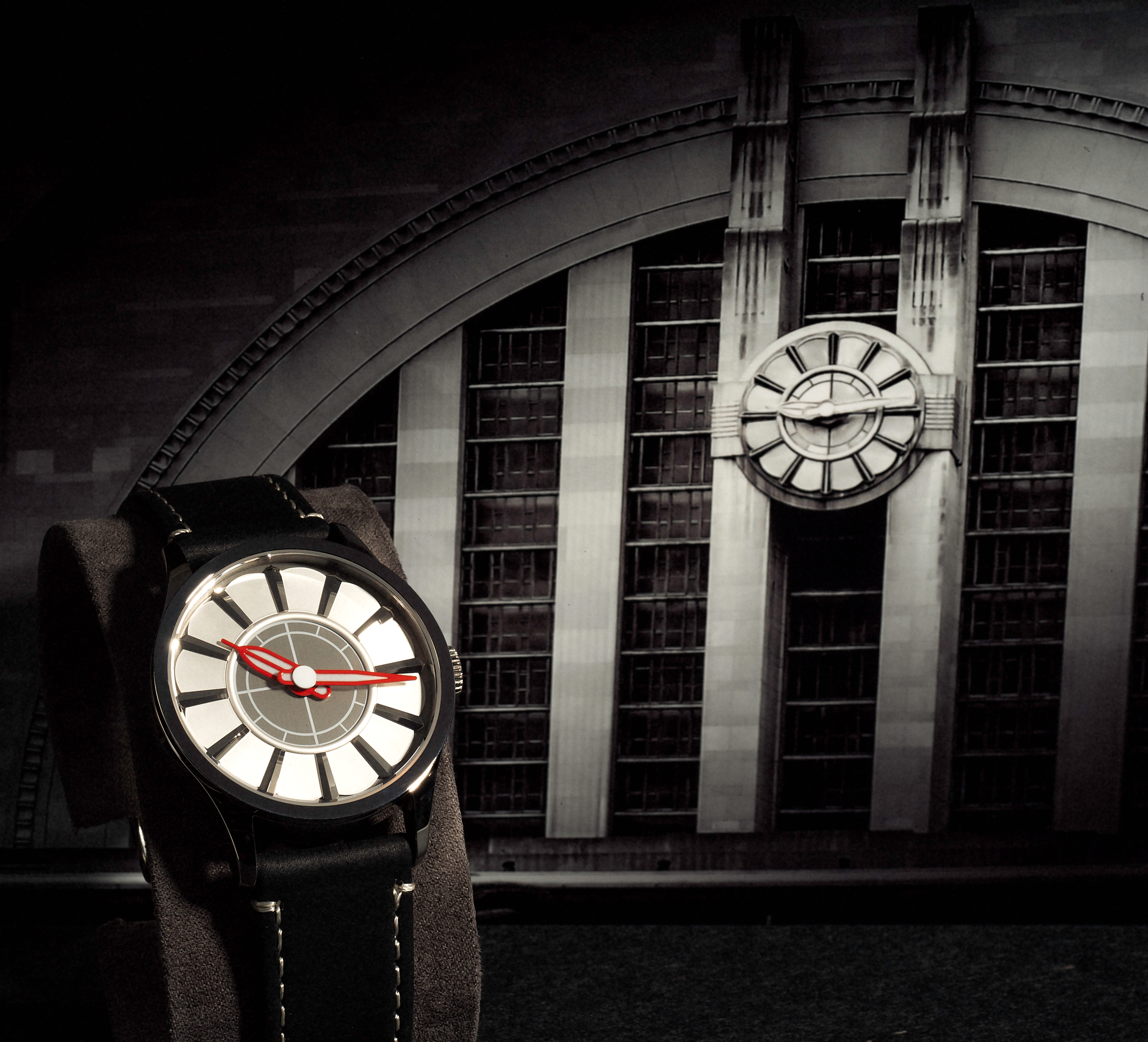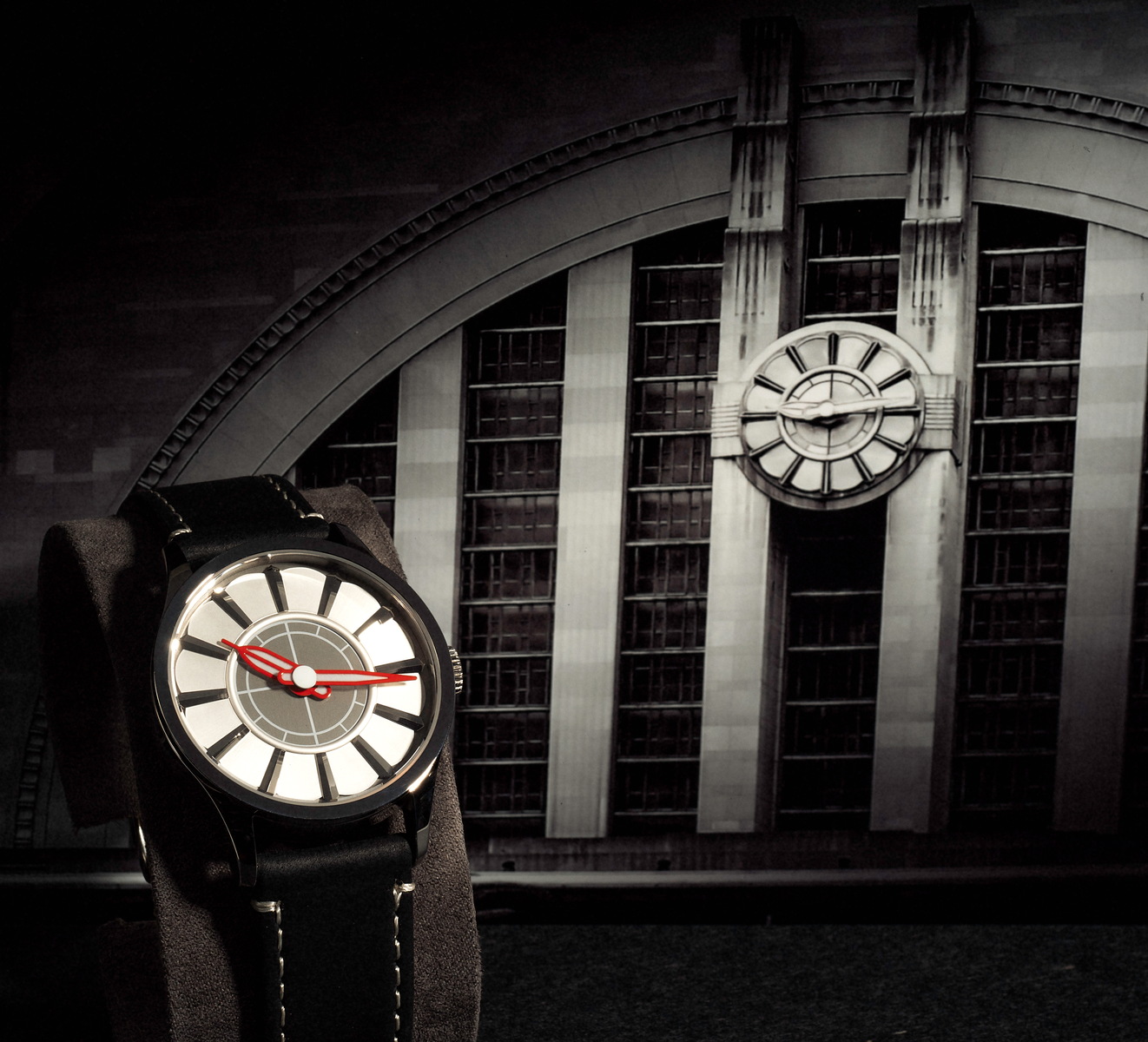Since its completion in 1933, Union Terminal train station has served as the jewel entrance to the “Queen City.” The largest half-dome structure in the Western Hemisphere, second only to the Sydney Opera House in the world, it stands as one of the United States’ finest examples of art-deco architecture.

The Union Terminal currently is home to three permanent museums and host to nationally-circulated special exhibits. The Museum Center provides quality educational facilities & resources as well as entertainment to patrons of all ages throughout the region.

Entering the "Temple to Transportation,” there is no cieling but a sky of circling color and tile mosaic sorrounding and above. Columned marble light post hold up lifesized characters of Cincinnati's American history.

Throughout the years of World War II Union Terminal served unprecedented numbers, mobilizing troops and moving much needed supplies in a time of strict gasoline rationing. At its peak in 1944, 34,000 passengers a day passed through the Union Terminal. Hundreds of trains would arrive and depart Union Terminal a day. By the war’s end the terminal served millions of troops, service personnel, and their families. Many Cincinnati Nuns and Women served the American troops with food, magazines, emotional and spiritual support; a history worth it's own articles of acknowledgment.

The Union Terminal was the basis for the Hall of Justice in Hanna-Barbera’s "Super Friends" Cartoon, making Union Terminal a pop culture icon.
The most fascinating aspect of the Union Terminal was how cars, taxis, busses & even the city streetcars could elegantly enter into & out of the station building itself. Everyone in the city was literally connected to the terminal via the streetcar and bus system and thereby, the entire Country via rail.
The property’s logistics allowed for smoother arrivals & departures, separating ramps for cars, busses, and streetcar. Although the Cincinnati Streetcar Company, in Classic Cincinnati style, never ran a streetcar line into Union Terminal. The third tunnel was used for storage instead. Personally, I can't imagine the costs involved with maintaining and updating that inside the building over decades; who would do the work, who is responsible for the cost? I imagine this may be why the Cincinnati Street Car Company failed to get the third tunnel at Union Terminal to house a train station stop via streetcar.

The terminal’s clocks, including a first-of-its kind digital clock made by IBM for what was back then a magazine stand, were connected to a master clock system in the basement of the Union Terminal (Until a flood) that kept synchronized time for all of the clocks in the entire station from a central location. This included the clock on the front of the terminal that inspired the Union Terminal watch!
We find it Inspiring how IBM converted mechanical energy into an electrical signage. There are amazing historians who have documented the process. Link to come.


The Union Terminal's control Tower "A" viewed over and operated 187 working pneumatically levers that moved the switches in the railyard. This allowed for a central panel to monitor the location and direction of all of the trains coming in and out from one overhead perspective. The pneumatic mechanical nature of this process is incredible. yet not necessarily new: The city of Paris, France used pneumatic mechnical energy to synchronize all of their city clocks, as well as private clocks, 60 years before Tower A. ( Article. - Youtube Video)

The Union Terminal is home to a vast collection of murals created by German born artist Winold Reiss. Reiss emigrated from Germany in 1913 and established himself as a portraitist and interior decorator.

Winold Reiss created 1/3 scale glass mosaic tiles figures depicting the cultural heritage and industry of Cincinnati. Collaborating with the Ravenna Tile Company of New York the manufactured and shipped the tiles he formed, his art massive larger than life murals.
Reiss’ designs would ultimately account for an astonishing 11,908 square feet of artwork. His murals are most notably seen in the 106ft tall main rotunda but were present throughout the terminal.

Union Terminal underwent the first full historic restoration in its 85-year history from 2016 to 2018. In the process, crews secured the Art Deco train station’s steel structure, repaired damaged masonry, secured the exterior envelope, updated aging mechanical systems and restored historic elements including light fixtures, artwork and the building’s iconic clock and fountain. With the National Historic Landmark’s future secured, it will continue to be a place where the past is preserved and lifelong memories are made.
This picture is of the Union Terminal clock before the 2018 renovation. It has red glass indices that were backlit by a light pointing behind the clock and metal reflectors dispersing the light behing the red glass. The dial face panels are a cream color semi opaque glass. The hands were filled with white. Pinkish red neon tubes outlined the border of the hands.












